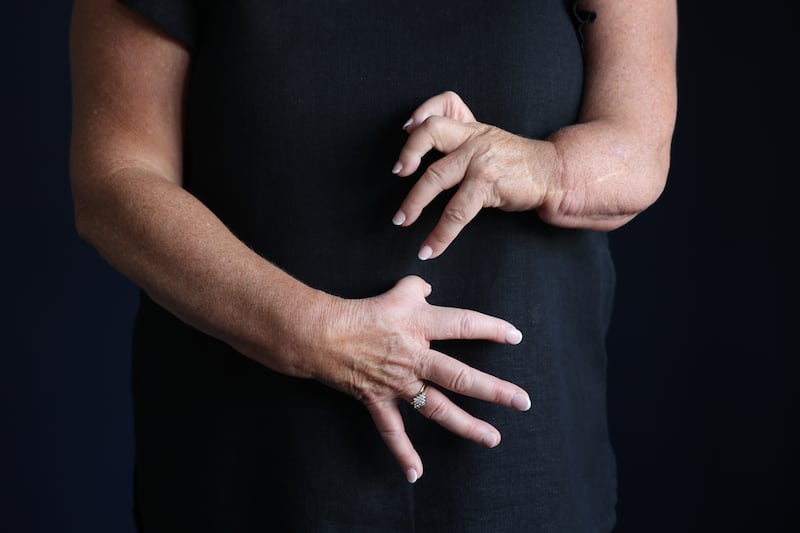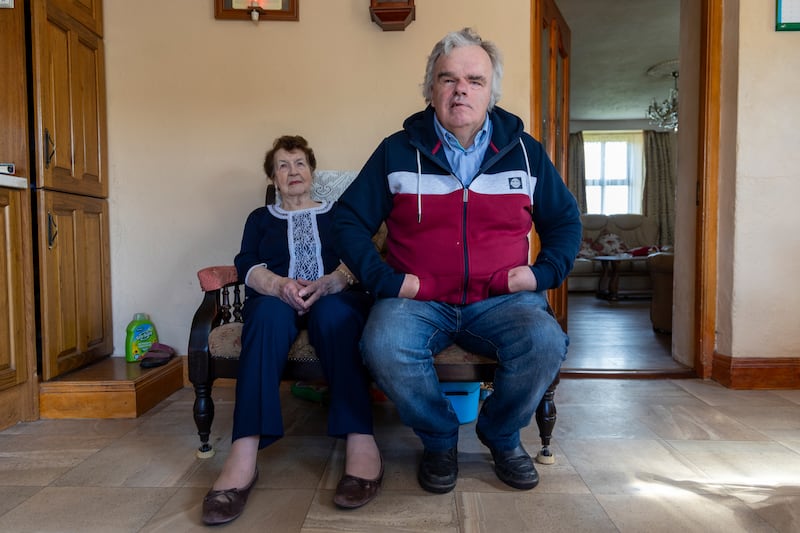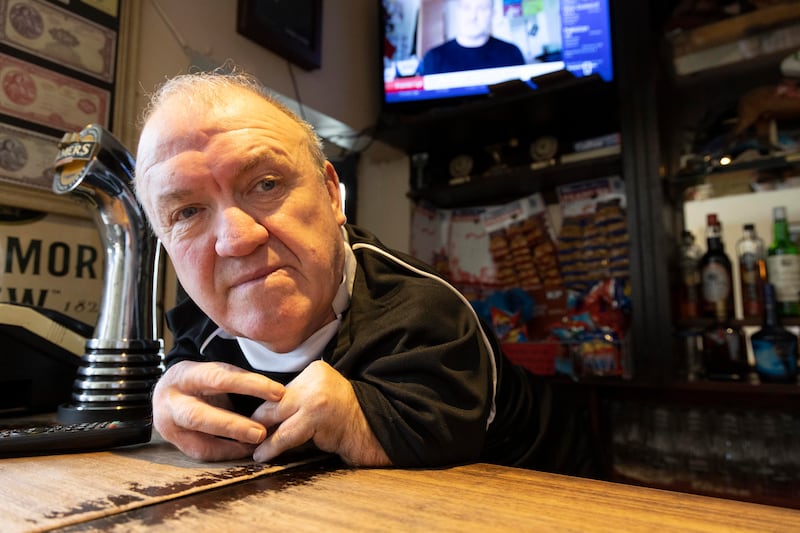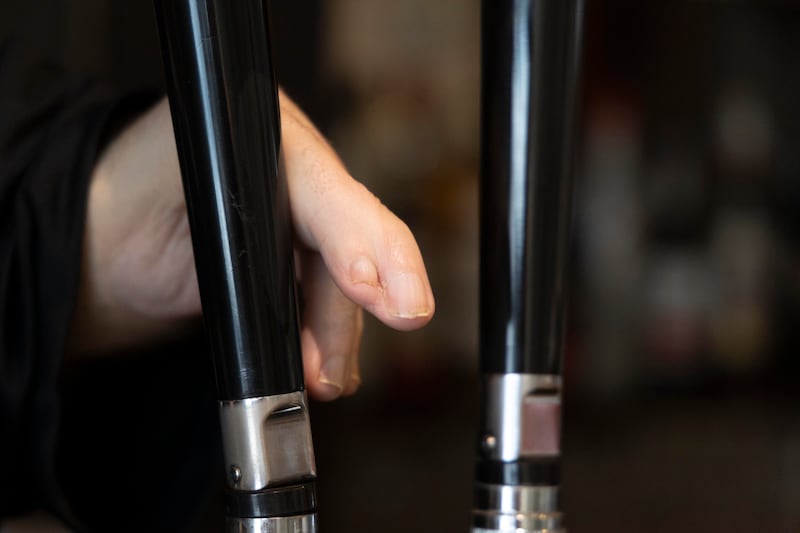The Thalidomide drug was licensed for sale in Ireland in 1959, and promoted as helping prevent nausea in pregnant women. It turned out to have devastating side effects, harming and deforming the developing foetus. The international withdrawal date for the drug was November 26th, 1961. However, it remained on the shelves of some rural pharmacies in Ireland, and in household medicine cabinets, until 1964.
Today, there are some 40 people in Ireland whose mothers took Thalidomide in good faith. These Thalidomide survivors are an ageing cohort of people who were not originally expected to have a long life expectancy. They are represented by the Irish Thalidomide Association, who are in ongoing discussions with the Government, as they seek to highlight the consequences of their ageing process.
Irish Times photographer Nick Bradshaw has travelled around Ireland over the past five months, taking portraits for his Thalidomide Series on his Canon camera. Originally from Sneem, Co Kerry, he now lives in Wicklow and has worked as a press photographer for more than 30 years.
“I have been photographing people from this group over several years, when they mark the anniversary of the withdrawal of the drug. They gather publicly at the end of November, generally outside the Dáil or the Taoiseach’s office. I got to know this group over time, and early this year, I asked if some people would be interested in being part of this series,” Bradshaw says.
READ MORE
[ ‘As a child I told people my fingers fell off and my hand shrunk in the wash’ ]
[ Ireland’s thalidomide survivors: ‘The State is only waiting for us to die’Opens in new window ]
“I wanted to make a respectful set of intimate portraits of these people, and of what some people call ‘their injuries’, and what some call ‘a disability’. They knew in advance the portrait would include their injury.”
Bradshaw visited people in their homes or workplaces. “We’d have a chat on arrival, and then get on with it.” He observed people moving through their space and day, and shot a number of portraits with each subject. Although press photographers (or reporters) routinely do not share pictures or copy with subjects in advance of publication, Bradshaw did so with his edit on this occasion.
“This is a very special, very personal and intimate series,” he explains. “It’s about trying to be respectful to people.”
FINOLA CASSIDY



Finola Cassidy (62) lives in Dublin. She is married with three children.
“Family and friends are my life. I love opera, classical music, Italy, and tennis. I played fun tennis for years. I was a bad tennis player because the way I do things is so unique. I had to give it up some years ago because I didn’t have the strength in my back and arms to go on. I really miss not being able to hold a tennis racket. I have left instructions with my children that I will be buried with my tennis racket.”
MARTIN MURPHY, PEGGY MURPHY


Martin Murphy (62) lives in a separate house on the family farm in Templemichael, Co Cork, where his mother Peggy Murphy (94) resided in the family home until recently.
Martin is unable to speak and cannot hear. He is missing an ear and has facial paralysis. He does all his own DIY and helps out anyone else who needs it. He is single.
Peggy recently had a fall and is still in a rehab facility. She hopes to come home soon.
TOMMY BURBAGE


Tommy Burbage (62) lives in Portarlington, Co Laois. He is married and has a step-daughter.
“I work in the family pub, Burbages; serving behind the bar. I’ve worked there for nearly 40 years. I think a pint was 45 pence when I started. It’s €5.40 now. I’m mad about horses, and racehorses. I used to break them and ride them. I loved the horses.”
MARY DUFFY
Mary Duffy (62) lives in Newcastle, Co Wicklow. She is married.
“I work as an artist, painter, and photographer. I also do a lot of sailing dinghies.
“Having no arms is a really unusual disability; there is no guidebook on how to deal with it. I have had to make it up myself. When I was 17 and leaving home and going to college, I came up with the idea of taking a barstool with me, to allow me to use tables and counters. It is like an extension of my body. I take it with me everywhere.
“I cannot bear it if someone else sits on the stool. The stool feels like part of my body. It allows me to do things, so if someone else is sitting on it, I feel like I am two years old, and I can’t do anything for myself.”
DR AUSTIN O’CARROLL

Dr Austin O’Carroll (62), lives in Dublin. He is married with two children and works as a GP in the inner city.
“I didn’t walk for a number of years as a child. Between the ages of five and 13, I had to have my leg broken and reset every year. It developed a stoic quality in me. That quality has served me hugely.
“I thought 10 years ago I would be in a wheelchair by now, and I’m not. It makes you more resilient if you can face your worst fears; it means you can cope with most things.”
GER KILDUFF
Ger Kilduff (64) lives in Mullingar, Co Westmeath. She is married with three children.
“I used to do a lot of sewing and knitting and now I can only do it on a small basis; that loss is one of my biggest regrets. I don’t peel potatoes any more, because it is too hard. My last resort is always to ask someone for help, even from someone in my family. I am stubborn.
“I look at my hand, and I think, ’Oh God’. Most people think you don’t care about your hand after this long, but deep down, you do. People look at you and sometimes only see your hand. I will never get used to seeing my hand.”
JOHN STACK
John Stack (60) lives in Tarbert, Co Kerry. He is married with three children.
“I am a farmer of beef cattle. I come from a family of butchers. I have a herd of about 80. I can do most things, but there are certain things I can’t do. If a cow is calving, I wouldn’t be able to use my hands to help. There are challenges every day, but you have to keep going.”
PROF JOHN KEARNEY
Professor John Kearney (61) lives in Dublin. He is married with three children.
“I’m a lecturer in Epidemiology at TU Dublin. I see myself as very lucky. I don’t have internal injuries of any kind; everything is on the outside.
“Growing up, my parents treated me like everyone else, so I thought I was totally normal. What’s hard now sometimes are people’s attitudes to how you look, which is exasperating. They think I can’t even sign my own name.”


















